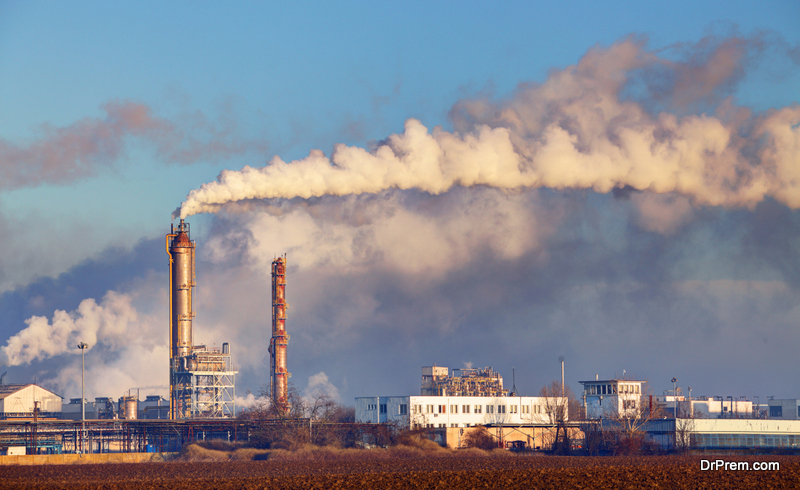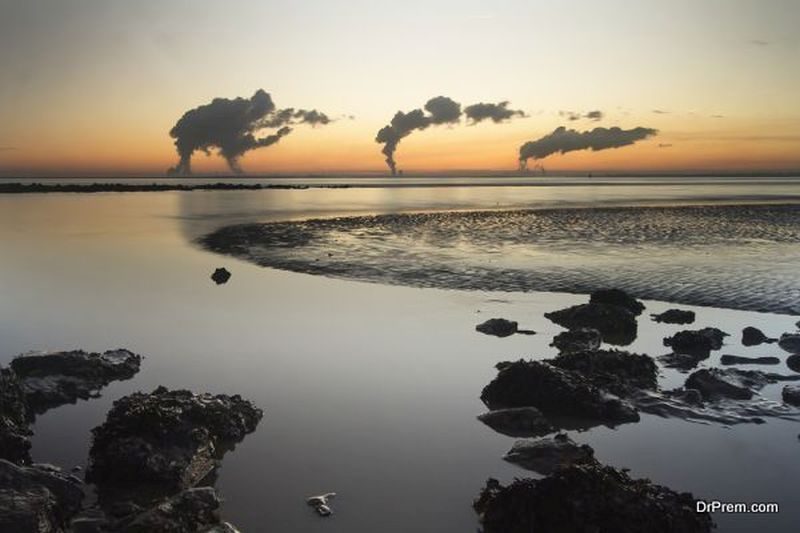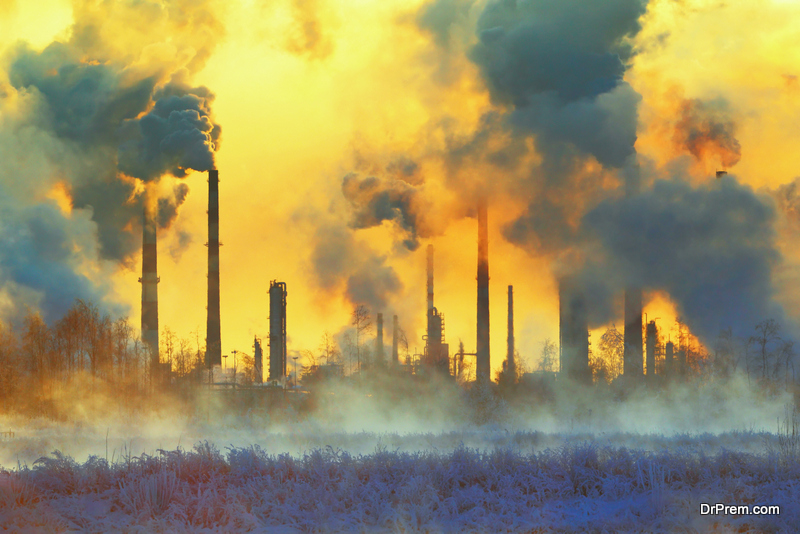Air pollutants are being generated by each facet of the industrial process; this includes product manufacturing, sourcing of raw material, repair services and maintenance, distribution, and so on.
There are hundreds of thousands of industrial facilities in the US alone. They all contribute to producing tons of consumer-level products. As helpful as these products may be, their production puts a significant amount of stress on our environment and health.
That’s why air pollution reduction has become one of—if not—the hottest topics of discussion in the past 60-70 years. This article focuses on different ways factories can reduce air pollution and destroy such compounds before they harm our atmosphere.
What Causes Air Pollution?
 You could define air pollution as an alteration of air quality typically characterized by measurements of biological, chemical, or physical pollutants in the air. So, air pollution essentially indicates the unwanted presence of pollutants or the unusual rise in the proportion of some components of the atmosphere.
You could define air pollution as an alteration of air quality typically characterized by measurements of biological, chemical, or physical pollutants in the air. So, air pollution essentially indicates the unwanted presence of pollutants or the unusual rise in the proportion of some components of the atmosphere.
Industries are a big contributor to air pollution. Most industrial processes release pollutants like hydrofluorocarbons and nitrous oxide into the air. Also, petroleum refineries liberate plenty of hydrocarbons into the air. Several agricultural practices, such as landfills and livestock rearing also contribute to atmospheric methane concentrations. Consequently, the ultimate impact is amplification in the global warming hazard.
Industrial Factories’ Solutions to Air Pollution
Industrial pollution takes on many different faces. It contaminates tons of sources of drinking water, releases undesired toxic substances into the air and decreases the quality of soil across the world. Many environmental disasters have been caused as a direct result of industrial mishaps that have yet to be brought under control.
Pollution from industrial factories poses a huge threat to mankind and the environment. In fact, research shows that air pollution is believed to be the biggest threat to life on earth.
Roughly 4.2 million premature deaths worldwide have been linked to air pollution, primarily from lung cancer, chronic obstructive pulmonary disease, stroke, heart disease, and acute respiratory infections in children.
To fight this crisis, nations across the globe are actively looking for ways to lessen their effect on the quality of air. Reducing industrial air pollution is the best and most effective way we can achieve this.
Although the favors are piled against us, it is still possible for factories to lessen their effect on air quality and here’s how they can do it.
Strict Policies
 Considering the rising concerns regarding air quality and emissions, different sets of rules and regulations have been implemented in order to reduce industrial air pollution. Many coal-fired plants were shut down to reduce pollution in regions like India and China, but the change doesn’t fully solve the air pollution issue.
Considering the rising concerns regarding air quality and emissions, different sets of rules and regulations have been implemented in order to reduce industrial air pollution. Many coal-fired plants were shut down to reduce pollution in regions like India and China, but the change doesn’t fully solve the air pollution issue.
The United States, among several other nations, have comprehensive legislation to guarantee clean air and control industrial factories. Such laws have generated a decrease in toxin emissions and industrial air pollution over time. According to EPA.gov, actions to implement the Clean Air Act have obtained dramatic reductions in air pollution, preventing several thousand cases of severe health effects each year.
EPA is helping states to meet standards for common pollutants by issuing national emissions standards for categories of new industrial equipment, such as industrial boilers, power plants, cement manufacturing, and secondary lead smelting.
If you manufacture or consult on boiler projects, companies like Industrial Boilers America are readily looking for outside contractors who can meet the EPA emissions standards to help in the erection of boiler proper, dryer, and air pollution control projects.
Dust Collectors
There are a number of regulations and laws when it comes to workplace safety, some of which are related to the environment and air quality. If the air quality is poor, it will cost you heavily, and not just in fines, but by producing potential hazards which can affect your employees and damage your factory.
Industrial dust collector systems can help you comply with governmental regulations while keeping both the people and equipment inside the factory safe.
When the air is polluted with dirt, debris, dust, gasses, or chemicals, it can severely affect the lungs of those breathing it in. Luckily, big-name companies like Baghouse America offer top-notch dust collectors that help remove such contaminants from the air, cleaning the air entirely and improving everyone’s safety. The benefits of these dust separator systems will be appreciated for years to come.
Wet Scrubbers
 Wet scrubbers are highly efficient air pollution control devices that help eliminate particles and gases from industrial exhaust streams. These machines operate via introducing the dirty gas stream with a scrubbing liquid—usually water. Particles or gases are then collected in the scrubbing liquid.
Wet scrubbers are highly efficient air pollution control devices that help eliminate particles and gases from industrial exhaust streams. These machines operate via introducing the dirty gas stream with a scrubbing liquid—usually water. Particles or gases are then collected in the scrubbing liquid.
Generally, wet scrubbers are the most appropriate pollution control device that enables you to collect both gas and particles in a single system.
This reason this technology is so popular today is that it is affordable and resilient against both particle and gas contaminants. As a result, it helps save businesses from having to purchase additional filtration devices, reducing the number of machinery present and optimizing factory floor space.
Most wet scrubbers are able to withstand combustible and corrosive materials and gases, making them very stable, durable, and safe.
Your Participation Is Also Needed
Air pollution has always been a big problem. If we don’t do something about it now, it will turn into a bigger problem tomorrow.
The following everyday tips are worth considering if we want to reduce air pollution once and for all.
- Conserve energy— both at home and at work
- Always pay attention to ENERGY STAR labels when purchasing home/office equipment
- Ride a bike, use public transportation, walk whenever you can
- Follow gas refueling guidelines for effective vapor recovery and make sure to tighten your gas cap properly
- Purchase portable gas containers labeled as “spill-proof,” if available
- Make sure the tires are inflated properly
- Keep your car, motorbike, and similar engines properly tuned
- Use environment-friendly cleaning products and paints whenever possible
- Use gas logs rather than wood
- Compost or mulch yard waste and leaves
Clean Alternatives

Factories are taking great measures to reduce toxic emissions. At the same time, others are planning to create cleaner energy systems in order to replace them. Wind and solar power are feasible renewable energy sources. While they may promise a break from fossil fuels in the future, for now, we will have to stick to other renewable sources.
Hydrogen, as opposed to other forms of natural gas, is a fully clean burning fuel, emitting only water vapor when in use. Other materials, too, like alcohol, waste, and wood can be burned to create energy. Natural gases can also be utilized to replace fossil fuels, even though they discharge greenhouse gases.
More popular solutions, like hydroelectric and biomass energy, are gaining momentum due to their affordability and stability.
All things considered, there’s still plenty of work to be done before such energy sources can be fully adopted in the replacement of fossil fuels. Factories and legislators are constantly reducing their impact on air quality. At the same time, technology is advancing almost every day.
What we can hope now is for us to carry on in our search for safer and more sustainable energy solutions.
Explore why is urbanization contributing to pollution by visiting this informative article on aclimatechange.com.
Article Submitted By Community Writer




